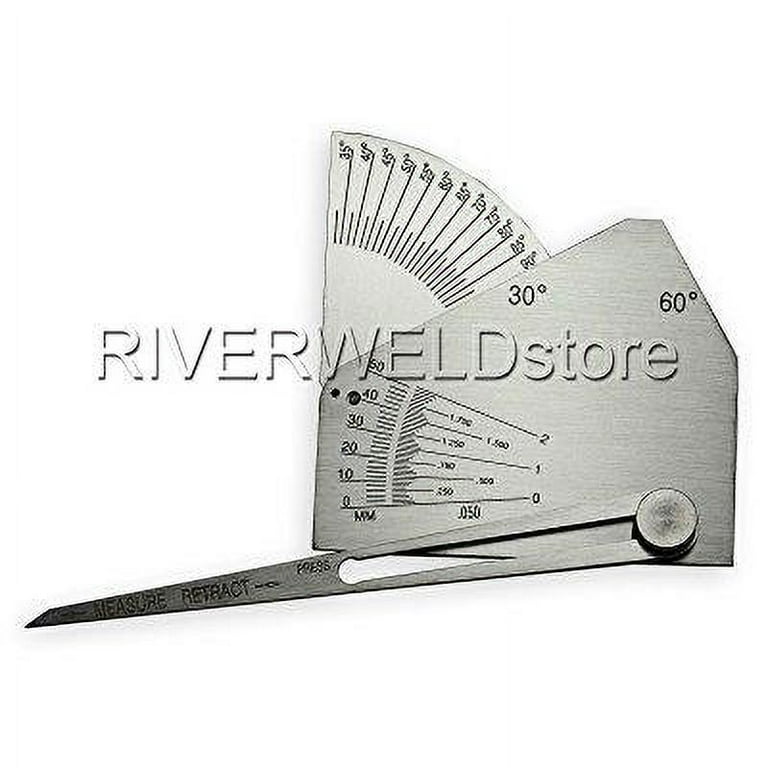The Ultimate Overview to Fillet Weld Quality Control: Making Sure Toughness and Resilience in Your Welded Joints
In the world of welding, guaranteeing the toughness and resilience of fillet welds is vital for the integrity of welded joints. As we begin on this expedition of fillet weld quality control, we will discover crucial elements that affect weld toughness, dive into effective assessment approaches, and discuss techniques for stopping usual weld issues.
Importance of Fillet Weld High Quality Control
Making sure correct fillet weld top quality control is paramount in guaranteeing the structural integrity and longevity of welded components in various industries. Fillet welds are typically utilized in structural steelwork, bridges, pressure vessels, pipelines, and other crucial infrastructure where the strength of the weld is important to general safety and performance. Quality assurance measures such as aesthetic examinations, non-destructive screening, and adherence to welding treatments assist determine potential defects like absence of blend, insufficient penetration, undercutting, or too much support.
Secret Factors Influencing Weld Strength
Accomplishing optimal weld toughness requires careful consideration of different key aspects that affect the honesty and longevity of the welded joint. The very first crucial aspect is correct joint prep work, which includes cleansing the base steels to eliminate any type of impurities that could compromise the weld. Furthermore, the fit-up of the joint is vital to guarantee correct penetration and combination of the filler material.
The option of the ideal welding technique and parameters likewise plays a substantial duty in identifying weld stamina. Aspects such as warmth input, traveling rate, and electrode angle can impact the quality of the weld. Furthermore, preserving the right interpass temperature level throughout multi-pass welding is essential to avoid cracking and guarantee a strong bond between the layers.
In addition, the selection of filler product and its compatibility with the base metals is important for accomplishing high weld stamina. Using filler product with the ideal mechanical properties can boost the total stability of the weld. Post-weld warm treatment and correct evaluation techniques are crucial actions in guaranteeing the toughness and toughness of the welded joint.
Examination Techniques for Weld Integrity

Another vital evaluation approach is liquid penetrant screening, where a liquid dye is put on the weld surface - Gauge Fillet Weld. The color seeps into any about his type of surface-breaking defects, making them visible under UV light. This approach is effective for identifying defects that might not show up to the naked eye


Ultrasonic screening is likewise extensively used for checking weld stability. High-frequency audio waves are routed into the weld, and any kind of interruptions in the acoustic wave pattern indicate possible defects like fractures or absence of fusion.
These assessment methods play a crucial duty in guaranteeing the top quality and reliability of welds, eventually adding to the overall stamina and durability of welded joints in industrial setups.
Protecting Against Common Weld Problems
In order to keep the architectural integrity of welded joints in industrial applications, it is vital to apply safety nets to attend to typical weld issues. One usual defect is lack of fusion, where the filler material stops working to bond effectively with the base steels, bring about vulnerable points in the weld. This can be prevented by ensuring proper heat control and using the correct welding technique.
Another frequent issue is porosity, triggered by gas entrapment in the weld steel throughout the welding procedure. To avoid this, it is necessary to clean up the base metals completely, use dry electrodes, and maintain an ideal welding setting with appropriate ventilation.
Additionally, cracks in welds can endanger the joint's toughness. To avoid this problem, it is necessary to regulate the air conditioning rate after welding, use pre-heating when needed, and choose appropriate welding criteria.
Enhancing Bonded Sturdiness With Proper Strategies
One crucial technique to boost weld resilience is to make sure correct weld bead placement. By placing the weld grain accurately within the joint, the weld's strength and resistance to tiredness can be dramatically enhanced.
Moreover, using appropriate pre-weld and post-weld heat treatments can assist lower residual tensions and enhance the weld's durability, making it extra immune to cracking and failure in time. One more method to improve weld toughness is to make use of high-quality recommended you read welding consumables and base materials. Choosing the right filler metal and guaranteeing the cleanliness of the base metals can prevent inclusions and other defects that could compromise the weld's durability. By executing these proper methods, welders can ensure that their bonded joints exhibit outstanding stamina and sturdiness, meeting the greatest high quality standards.
Final Thought
In final thought, keeping top quality control standards for fillet welds is critical for guaranteeing the toughness and toughness of welded joints. By comprehending the key variables affecting weld stamina, utilizing assessment approaches for weld stability, protecting against common weld flaws, and employing appropriate strategies, welders can enhance the general longevity of their welds. It is crucial to focus on quality control procedures to generate dependable and resilient bonded joints.
In the world of welding, Read More Here ensuring the strength and toughness of fillet welds is extremely important for the integrity of welded joints. As we begin on this exploration of fillet weld high quality control, we will certainly reveal essential elements that influence weld stamina, dig right into reliable examination approaches, and discuss strategies for avoiding typical weld problems.Accomplishing ideal weld stamina needs careful consideration of various key factors that influence the integrity and durability of the bonded joint (Gauge Fillet Weld).In verdict, keeping high top quality control requirements for fillet welds is vital for ensuring the toughness and longevity of bonded joints. By comprehending the essential elements affecting weld toughness, using evaluation methods for weld integrity, protecting against typical weld problems, and employing correct methods, welders can enhance the total toughness of their welds